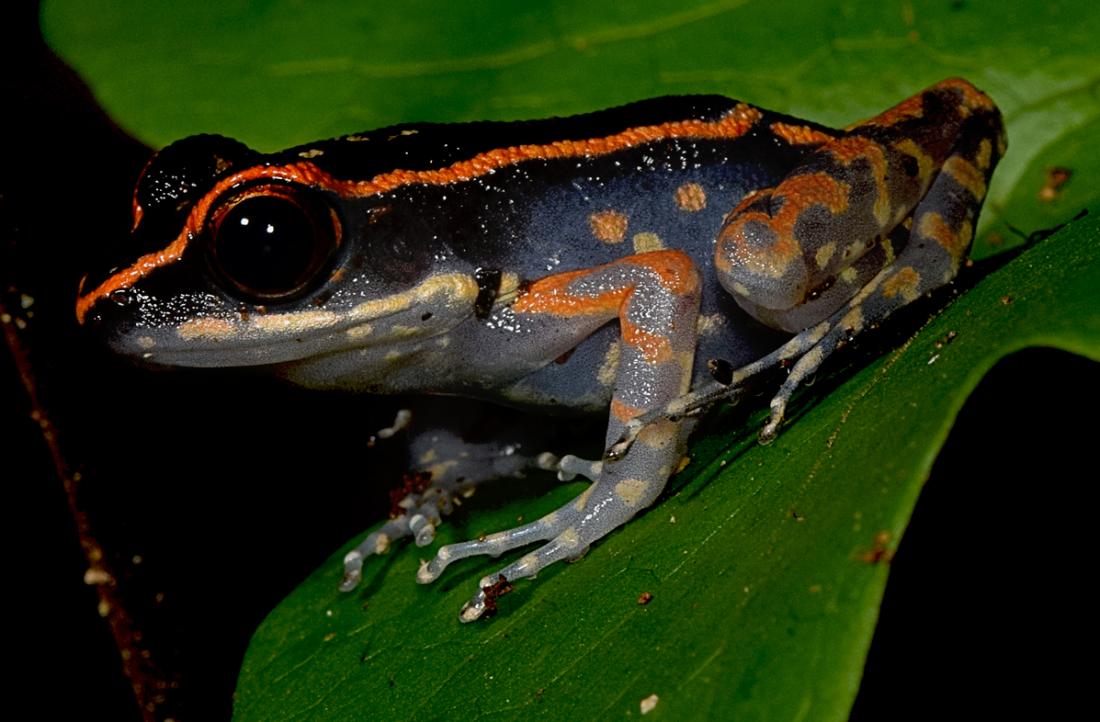Pulchrana signata, a member of Southeast Asia’s riparian frog assemblage.
This story is featured in the Asia Research News 2021 magazine. Read in ISSUU (above) or full text and images below.
Descriptions of new species have been rapidly on the rise since the turn of the century, especially in biodiversity hotspots like Southeast Asia. Many of these are cryptic species: animal groups that look alike but are genetically quite distinct.
Distinguishing cryptic species is notoriously difficult and can lead to overestimates of species numbers. A new study characterizing species boundaries in a group of Southeast Asian spotted stream frogs urges a more cautious approach.
“We showed that breeding between populations and then further interbreeding between hybrids and parent populations can produce evolutionary patterns and levels of divergence that resemble distinct species, but they are still part of one species lineage,” says Indraneil Das, a conservation biologist at Universiti Malaysia Sarawak (UNIMAS).
Most new species boundaries are defined using statistical methods that use similarities and differences in genetic characteristics to estimate evolutionary relationships between species and produce a best guess at the family tree. But these conventional methods often ignore other important factors, such as the transfer of genetic material from one population to another, called gene flow.
The international team of researchers compared conventional methods of species description with more robust genomic analyses that take gene flow and other factors into account, using more than 12,000 genetic markers to produce a more unbiased representation of evolutionary relationships. They studied frog populations from Pulchrana picturata, a single species that shows high levels of genetic diversity, leading scientists to suspect it may actually contain several cryptic species.
The results showed two distinct evolutionary lineages within P. picturata: one comprising populations from Peninsular Malaysia and Sumatra, and the other from Borneo.
Conventional statistical methods show the Borneo population appearing to contain multiple cryptic species. However, the new approach indicates their genetic diversity is actually the result of historical interbreeding between Borneo and Sumatra populations, and there is not enough evidence they are on diverging evolutionary paths to call them distinct species.
This implies all Borneo populations should be considered a single species under the name P. picturata. In contrast, the Peninsular Malaysia and Sumatra population evolved separately and should be considered a novel species.
These findings, published in the journal Molecular Ecology, demonstrate defining cryptic species should not rely solely on conventional methods, but should also examine population structure and gene flow.
“Although the rapid addition of species to global and national lists can invoke a sense of national pride, species inflation can create burdens for conservation and wildlife management,” says Das. “A more robust genomic approach can help improve scientific estimates of biodiversity not only for amphibians, but many other animals across Southeast Asia and the tropics.”
Further information
Professor Indraneil Das
[email protected]
Institute of Biodiversity and Environmental Conservation
Universiti Malaysia Sarawak




